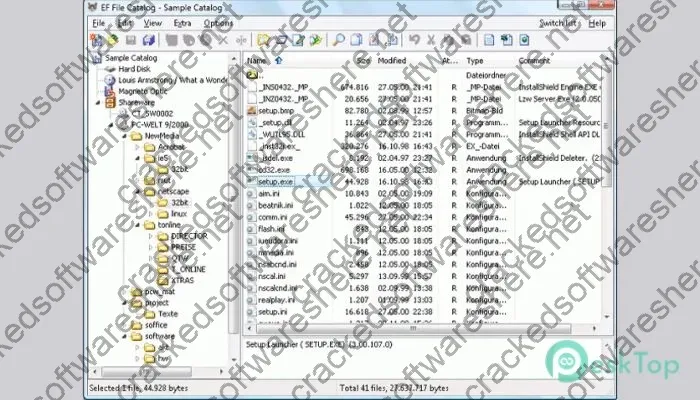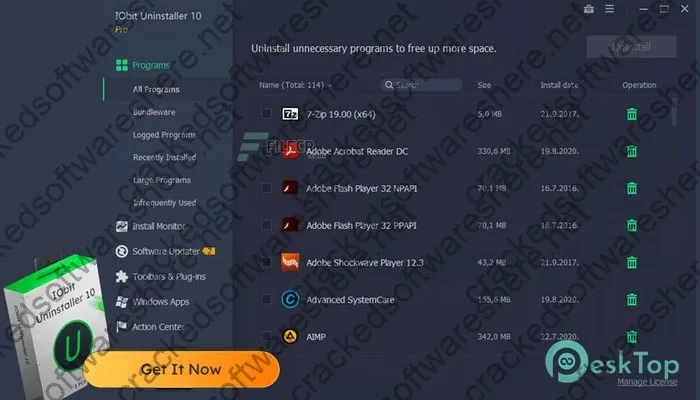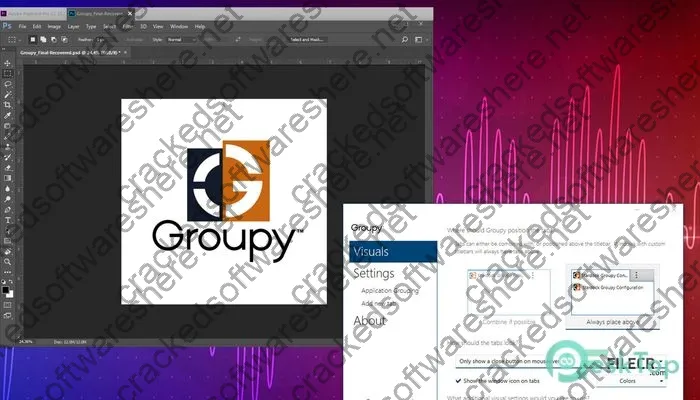Managing files effectively is crucial for productivity and organization, whether you’re dealing with personal documents or large corporate data sets. An Download free EF File Catalog Crack is a powerful tool that can help you take control of your file management needs.
How Does an EF File Catalog Work?
At its core, an EF File Catalog is a database that stores information about the files and folders on your computer or network. It works by indexing the files and their metadata, such as file names, sizes, dates, and attributes, into a centralized catalog. This process is handled by a component called the “catalog writer,” which constantly monitors the specified locations for changes and updates the catalog accordingly.
The EF File Catalog consists of several key components:
- Catalog Files: These are the physical files that store the indexed data about your files and folders.
- Catalog Writer: This component monitors specified locations for file changes and updates the catalog accordingly.
- Database: The catalog data is stored in a database, allowing for efficient searching and filtering.
- User Interface: A graphical interface or command-line tools that allow you to interact with and manage the catalog.
By maintaining an up-to-date index of your files and their metadata, the EF File Catalog enables you to quickly search, filter, and organize your files based on various criteria.
Setting Up and Using an Activation Key EF File Catalog Crack
Setting up an EF File Catalog is a straightforward process. Here are the general steps:
- Create a New Catalog: Start by launching the EF Catalog application and creating a new catalog file.
- Add Locations: Specify the folders or network locations that you want the catalog to monitor. You can add multiple locations if needed.
- Configure Options: Customize the catalog’s settings, such as what file types to include, what metadata to index, and any exclusions or filters.
- Start Indexing: Initiate the indexing process, which will scan the specified locations and build the initial catalog database.
Once the initial indexing is complete, you can start using the EF File Catalog to search, filter, and manage your files. The user interface typically provides various options for searching, such as:
- File Name: Search for files by their name or part of their name.
- File Type: Filter the catalog to show only specific file types (e.g., documents, images, videos).
- Date Range: Find files created or modified within a specific date range.
- Size Range: Search for files within a certain size range.
- Metadata: Search based on metadata fields like author, keywords, or custom tags.
The EF File Catalog also offers handy features to enhance your file management experience:
See also:
Handy Catalog Features
- Subfolders: Organize your files into virtual subfolders within the catalog for better organization.
- User Permissions: Control who can access and modify the catalog, ensuring data security.
- File Explorer Integration: Access the catalog directly from within your operating system’s file explorer for seamless navigation.
- Command-Line Utilities: Perform catalog operations using command-line tools, enabling automation and scripting.
Benefits of Using an EF File Catalog
Using an EF File Catalog can provide numerous benefits for individuals and organizations alike:
- Quick File Searches: Find files almost instantly based on their names, types, metadata, or any combination of criteria, saving you valuable time.
- Filtered Views: Easily generate lists of files filtered by type, date range, size, or custom criteria, allowing you to focus on specific subsets of your data.
- Duplicate File Identification: Identify and manage duplicate files across your storage locations, freeing up disk space and reducing clutter.
- File Change Tracking: Monitor changes to your files over time, including modifications, deletions, and additions, providing a comprehensive audit trail.
EF Catalog vs. Other File Management Options
While EF File Catalogs offer powerful file management capabilities, they are not the only solution available. Here’s how they compare to other popular options:
| Option | Pros | Cons |
|---|---|---|
| EF File Catalog | – Centralized database for efficient searching – Customizable indexing options – Tracks file changes – Filtered views |
– Requires setup and maintenance – Performance can degrade with large file sets |
| Operating System Search | – Built-in and readily available – Simple to use |
– Limited search capabilities – No filtered views or change tracking |
| Third-Party File Managers | – Rich feature sets – Often includes duplicate finders and other tools |
– Varying levels of complexity and cost – May not provide a centralized catalog |
Ultimately, the choice between an EF File Catalog and other options will depend on your specific needs, the size of your file collection, and the level of control and customization you require.
Troubleshooting Common Issues
While EF File Catalogs are generally reliable, you may encounter some issues during their use. Here are some common problems and their solutions:
- Catalog Corruption: If your catalog becomes corrupted or displays errors, try rebuilding the catalog from scratch or using the built-in repair utilities.
- Performance Issues: Large file sets or high disk activity can impact the catalog’s performance. Consider excluding unnecessary locations, optimizing the database, or upgrading your hardware.
- Accidentally Deleted Catalogs: If you accidentally delete your catalog files, you may be able to recover them from your system’s backup or restore points.
Best Practices for EF File Catalogs
To get the most out of your EF File Catalog and ensure smooth operation, follow these best practices:
- Naming Conventions: Establish clear naming conventions for your files and folders to facilitate better organization and searching within the catalog.
- Regular Maintenance: Perform regular maintenance tasks, such as optimizing the catalog database, removing obsolete entries, and backing up your catalog files.
- Automate Updates: Leverage the available tools and scripts to automate the process of updating your catalog, ensuring it stays up-to-date with minimal manual intervention.
- Data Security: Implement appropriate access controls and permissions to protect your catalog data from unauthorized access or modifications.
By following these best practices, you can ensure the integrity, performance, and reliability of your EF File Catalog over time.
Conclusion
An Free download EF File Catalog is a powerful tool that can revolutionize the way you manage and organize your files. By indexing your files and their metadata into a centralized database, it enables quick searches, filtered views, duplicate identification, and change tracking capabilities.
Whether you’re an individual seeking better organization or a business looking to streamline data management, an EF File Catalog can provide the solution you need. Take control of your file management today by setting up an EF File Catalog Crack and experiencing the benefits of efficient file organization and retrieval.
See also:




Prior to purchasing this cutting-edge software, take a look at this detailed review here:
https://softsforfree.org/wonderfox-hd-video-converter-factory-pro-serial-key-27-0-free-download/
You won’t want to miss the in-depth review on this program right here:
https://cracks-software-here.org/mountain-duck-keygen-4-15-2-21816-full-free-download/
Check out the full review of this incredible software at the link:
https://cracksoftforfree.com/edge-diagrammer-crack-7-27-2197-free-download/
Get all the details about this top-rated software via our analysis on this website:
https://crackingsofts.net/parallels-toolbox-crack-6-6-1-4005-free-download/
This brutally honest writeup on this feature-packed software can be found at this link:
https://cracked-softwares.net/tableplus-crack-5-8-2-full-free/
Prior to purchasing this powerful application, check out this detailed writeup at this link:
https://onlyhack.net/2024/04/17/affinity-photo-crack-2-4-0-2301-free-download/
Take a look at the in-depth writeup of this fantastic application on the link:
https://softwarescracks.org/snapdownloader-activation-key-1-14-7-free-download/
The tell-all review on this powerful software can be found over at:
https://cracksoftnow.org/2024/01/20/android-mythicsoft-filelocator-pro-keygen-2022-build-3389-full-free-download-latest/
Check out the in-depth review on this fantastic application over at the link:
https://cracks-softs-here.net/2024/01/mailbird-pro-activation-key-3-0-3-free-full-activated/
Get all the details for this program from our review on this website:
https://getcracksoftwares.com/asap-utilities-crack-8-5-free-download/
Check out the detailed writeup of this amazing application on the URL:
https://cracked-softwares-here.net/2024/05/22/httpmaster-pro-crack-5-8-5-free-download/
If you’re considering this powerful application, take a look at our in-depth writeup on:
https://best-crackedsoftware.org/itubego-musify-crack-3-7-1-free-download/
Get the full story for this amazing program via the writeup over at this URL:
https://software-cracks-here.org/glary-malware-hunter-pro-crack-1-183-0-804-free-download/
Read the in-depth review on this fantastic program on the URL:
https://best-hackedsoft.org/ef-commander-serial-key-24-03-free-download/
Our no-holds-barred analysis of this powerful software is available at this link:
https://reviewsoft.net/ez-cd-audio-converter-crack-11-5-0-1-free-download/
Before you buy this powerful program, take a look at our detailed review here:
https://hacked-software.org/steinberg-vst-live-pro-crack-1-4-0-free-full/
Take a look at the detailed analysis on this amazing program at the link:
https://softforyou.net/antares-auto-tune-bundle-crack-2024-free-download/
Prior to purchasing this cutting-edge application, check out the detailed review on:
https://crackingsofts.org/previsat-crack-6-1-5-2-free-download/
Get all the details about this top-rated app in our analysis on the link:
https://gigapc.net/2024/03/10/datanumen-backup-crack-1-7-1-free-full-activated/
Read the in-depth writeup on this incredible software at the link:
https://cracksoftbest.org/arturia-fx-collection-serial-key-2023-12-full-free/
Prior to purchasing this powerful program, take a look at this detailed writeup at this link:
https://cracked-softwares.net/streamfab-youtube-downloader-pro-crack-6-1-7-9-free-download/
Check out the detailed analysis for this amazing software over at the URL:
https://cracked-soft-here.org/anytime-organizer-deluxe-keygen-16-1-5-3-free-download/
If you’re considering this application, read the in-depth review at this link:
https://cracksoftnow.org/2024/03/24/kmsauto-lite-activation-key-1-8-8-free-download/
Be sure to check out this analysis of this app right here:
https://best-cracksoft.com/pchelpsoft-driver-updater-keygen-7-1-1130-full-free/
Check out the full review for this incredible application on the URL:
https://softwares-cracks.net/fbackup-activation-key-9-8-840-free-download/
Check out the in-depth writeup on this fantastic application on the link:
https://cracksofthere.org/2024/04/20/audacity-activation-key-3-4-2-free-download/
Read the in-depth review of this amazing software on the URL:
https://software-cracks-here.org/anytrans-ios-crack-8-9-6-20240417-free-download/
Don’t miss the writeup of this stellar app over at:
https://best-crackedsoftwares.net/vovsoft-download-mailbox-emails-crack-2-0-full-free-activated/
Get all the details about this top-rated program via the analysis on the link:
https://best-hackedsoftware.org/parallels-toolbox-crack-6-6-1-4005-free-download/
Get the full story on this software via our analysis on the link:
https://softsforfree.org/3d-coat-crack-2023-26-free-download/
The tell-all review for this software is posted at this link:
https://cracksoftnow.org/2024/03/26/soundpad-3-3-crack-free-download/
Read the full review of this amazing software over at the URL:
https://crackedsoftmarket.org/2024/01/infotouch-professional-activation-key-2-4-3-11586-free-download-full-last-version/
The brutally honest analysis for this software can be found right here:
https://best-cracksoftware.net/boris-fx-continuum-complete-2024-crack-free-download/
If you’re considering this application, check out the detailed writeup at this link:
https://cracks-software-here.net/2024/05/01/varicad-2022-keygen-free-download/
Prior to purchasing this cutting-edge application, read this comprehensive writeup here:
https://crackedsofthere.net/2024/01/26/beecut-keygen-1-8-2-54-download-free/
Before you buy this powerful application, check out this comprehensive analysis at this link:
https://cracked-soft-here.net/screenpresso-pro-crack-2-1-26-free-download/
Our brutally honest review for this software is posted over at:
https://softwares-cracked.org/4k-tokkit-crack-2-7-2-0930-free-download/
Get the scoop for this amazing software from our writeup over at this URL:
https://softforyou.net/wondershare-filmora-11-activation-key-free-download/
Get the full story for this top-rated app from our analysis on the link:
https://getcracksoftwares.org/adobe-premiere-pro-cs6-crack-6-0-3-free-download/
Get the full story for this program from this writeup at this URL:
https://getfreesofts.net/audacity-crack-3-5-1-free-download/
Get all the details on this top-rated app from our analysis at this website:
https://crackedsoftwaresolutions.net/2024/02/cypheros-ts-doctor-serial-key-4-0-32-full-free/
Before you buy this software, read the comprehensive review here:
https://softscracks.org/abelsoft-photoboost-crack-25-9-73-free-download/
You won’t want to miss the analysis on this stellar software right here:
https://softsforfree.com/keepstreams-crack-1-2-2-3-free-download/
Before you buy this program, read the in-depth writeup here:
https://cracked-softwares.com/itoolab-watsgo-keygen-8-5-0-free-download/
Get all the details for this amazing software via the review at this website:
https://softwares-cracks.org/abelssoft-undeleter-activation-key-v8-0-50411-full-free/
You won’t want to miss this review on this program at this link:
https://best-hackedsoft.org/cyberghost-vpn-crack-6-5-1-3377-free-full-activated/
Our tell-all analysis for this feature-packed program can be found right here:
https://getcrackedsoftware.org/proxifier-crack-4-12-free-download/
Our tell-all analysis of this application is available over at:
https://found-cracked-here.net/bluestacks-tweaker-keygen-6-9-2-free-download/
Before you buy this powerful application, take a look at our detailed analysis here:
https://cracksofthere.org/2024/05/23/iobit-smart-defrag-pro-crack-9-4-0-342-free-download/
Before you buy this application, take a look at the detailed analysis here:
https://best-crackedsoft.org/aomei-winfrgui-crack-1-0-2-free-download/
Prior to purchasing this powerful program, read our in-depth analysis on:
https://cracked-soft-here.org/wise-program-uninstaller-crack-3-1-7-261-free-download/
Get all the details on this amazing software via this analysis over at this website:
https://mainhacks.net/abbyy-finereader-activation-key-16-0-14-7295-free-download/
Get the scoop about this top-rated program from this writeup over at this website:
https://cracks-software-here.net/2024/03/08/cadprofi-serial-key-2021-07-full-free-key/
You won’t want to miss the in-depth review of this program over at:
https://crackingsofts.net/affinity-photo-keygen-2-4-0-2301-free-download/
Be sure to check out the analysis of this stellar software over at:
https://softsforfree.com/any-video-downloader-pro-crack-8-8-17-free-download/
Check out the in-depth analysis on this amazing program on the website:
https://soft-store-here.org/abelssoft-cryptbox-2023-crack-v11-05-47406/
Get the full story about this amazing program from our analysis on this URL:
https://onlyfreesoft.net/fbackup-crack-9-9-860-free-download/
Our brutally honest writeup of this application can be found right here:
https://crackedsofthere.org/2024/02/nch-wavepad-activation-key-17-86-full-free/
This no-holds-barred analysis for this powerful application can be found over at:
https://softforyou.net/macrorit-partition-expert-crack-8-1-6-free-download/
Before you buy this program, take a look at the detailed writeup here:
https://best-hackedsoft.org/vcap-downloader-pro-crack-0-1-14-5554-full-free/
Check out the detailed review on this incredible software over at the website:
https://getcracksoftwares.com/aiseesoft-phone-mirror-crack-2-2-28-free-download/
The no-holds-barred analysis for this program can be found right here:
https://softfinder.org/ismyhdok-keygen-3-93-download-free/
This brutally honest review for this feature-packed application is posted at this link:
https://cracksoftnow.org/2024/06/05/niubi-partition-editor-crack-9-9-5-free-download/
Don’t miss the analysis of this stellar software at this link:
https://soft-store-here.org/excite-audio-motion-harmonic-crack-1-2-0-macos-full-free/
Take a look at the full review of this incredible application at the website:
https://softscracks.org/goodsync-enterprise-crack-12-6-6-6-free-download/
Get all the details for this amazing app in the analysis at the link:
https://softwares-cracks.org/easeus-mobimover-technician-pro-keygen-6-0-5-21620-full-free/
Our brutally honest writeup on this powerful software can be found over at:
https://cracksofthere.org/2024/06/11/smadav-pro-2023-crack-free-download/
Our tell-all review for this application is posted at this link:
https://best-crackedsoftwares.net/jp-software-cmdebug-keygen-31-01-15-full-free/
Before you buy this cutting-edge software, take a look at this detailed writeup here:
https://best-cracksoft.net/heidi-software-hd-downloader-crack-12-7-free-download/
You won’t want to miss this writeup on this stellar app over at:
https://cracksoftshere.org/2024/02/abelssoft-antiransomware-2021-activation-key-v21-93-28318-full-free-activated/
Before you buy this powerful application, check out the comprehensive review here:
https://crackedsofthere.org/2024/03/glary-malware-hunter-pro-crack-1-180-0-800-free-download/
Before you buy this cutting-edge application, check out this detailed writeup at this link:
https://best-hackedsoftware.org/adobe-acrobat-pro-dc-crack-v24-2-20857-free-download/
Get the scoop about this app from our review on this URL:
https://getcracksoftwares.com/apple-logic-pro-x-crack-11-0-0-free-download/
Prior to purchasing this cutting-edge application, check out this in-depth review here:
https://getfreesofts.org/tenorshare-reiboot-pro-crack-9-4-3-free-download/
Be sure to check out the analysis of this stellar software over at:
https://getcracksoftwares.net/dslrbooth-professional-edition-crack-7-45-0306-1-free-download/
The brutally honest analysis for this powerful program can be found over at:
https://softs-for-free.com/techsmith-snagit-2023-crack-0-4-free-full-version/
Our brutally honest review of this feature-packed application can be found at this link:
https://found-cracked-here.net/treesize-free-activation-key-9-1-3-1877-free-download/
Get the scoop about this top-rated software from this review at the link:
https://cracksofthere.org/2024/03/12/slimpdf-reader-keygen-2-0-10-full-free/
Our tell-all analysis on this application is posted right here:
https://hackpc.net/2024/02/21/goversoft-privazer-serial-key-4-0-79-free-full/
This no-holds-barred analysis of this feature-packed software can be found over at:
https://softwares-cracks.net/vovsoft-ai-requester-crack-2-1-0-free-full-activated/
Before you buy this software, check out the detailed analysis at this link:
https://cracked-soft-here.com/urban-vpn-serial-key-2-2-15-free-download/
The no-holds-barred analysis for this feature-packed program is posted at this link:
https://getcracksoftwares.com/apple-logic-pro-x-crack-11-0-0-free-download/
Get all the details on this top-rated software from our analysis on the link:
https://cracksoftshere.net/2024/05/tomabo-mp4-downloader-pro-crack-4-30-1-free-download/
Prior to purchasing this cutting-edge program, read our detailed review at this link:
https://found-cracked-here.org/windows-loader-crack-2-2-2-free-download/
Take a look at the full review on this amazing software at the website:
https://cracked-softwares.com/coder-oss-enterprise-activation-key-2-3-3-free-full-activated/